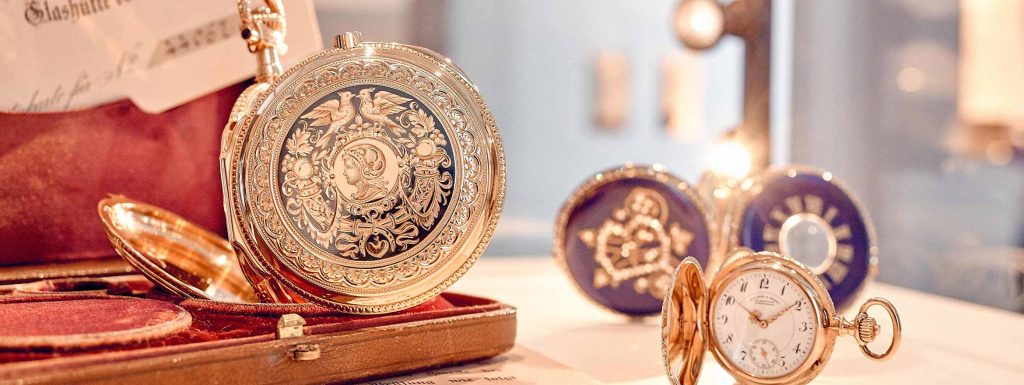Blog
“The Most Influential Watchmakers in History”
The world of horology is rich with innovation, craftsmanship, and tradition. Over the centuries, certain watchmakers have shaped the way we think about timekeeping, elevating it from a simple tool for measurement to a respected art form. These influential figures in the history of watchmaking revolutionized the industry with their inventions, designs, and commitment to precision. In this article, we explore some of the most pivotal watchmakers who have left a lasting impact on the world of horology.
1. Abraham-Louis Breguet (1747–1823)
Widely regarded as one of the greatest watchmakers of all time, Abraham-Louis Breguet is credited with inventing numerous horological innovations that are still used today. A visionary with a keen sense of mechanics and artistry, Breguet’s contributions revolutionized watchmaking in the 18th and 19th centuries.
Key Contributions:
- The Breguet Overcoil: Breguet introduced the overcoil, a feature in the hairspring that improves the accuracy of mechanical watches by ensuring that the spring is wound evenly.
- The Tourbillon: Perhaps his most famous invention, the tourbillon is a rotating cage that holds the escapement and balance wheel, designed to counteract the effects of gravity on the accuracy of a watch. This invention remains a symbol of high-end watchmaking.
- The Breguet Hands: The iconic “Breguet hands,” with their open-loop design, are still widely used in many luxury watches today.
Breguet’s legacy extends beyond his innovations. He also crafted watches for royalty, including Queen Marie Antoinette, and became the official watchmaker to the French Royal Navy. His contributions continue to influence modern horology, and the Breguet brand remains a symbol of sophistication and precision.

2. Hans Wilsdorf (1881–1960)
As the founder of Rolex, Hans Wilsdorf transformed the watchmaking industry and elevated wristwatches to a symbol of luxury, precision, and innovation. Wilsdorf’s foresight and dedication to quality made Rolex the most recognizable and influential brand in the world of horology.
Key Contributions:
- Waterproof Watches: In 1926, Wilsdorf introduced the Rolex Oyster, the world’s first waterproof wristwatch. This innovation revolutionized the practicality and reliability of wristwatches, making them a popular choice for athletes, explorers, and everyday wearers.
- Perpetual Movement: Wilsdorf’s Rolex Perpetual movement, introduced in 1931, was the first self-winding mechanism that utilized the motion of the wearer’s wrist to wind the watch. This technology is the foundation of modern automatic watches.
- The Datejust: Released in 1945, the Rolex Datejust was the first wristwatch to feature a date function that automatically changed at midnight. This design became a hallmark of Rolex’s innovation.
Hans Wilsdorf’s vision was to create watches that combined both precision and elegance, and he achieved this with the Rolex brand, making it synonymous with quality, durability, and style.
3. Patek Philippe (1839–Present)
Founded by Antoine Norbert de Patek and François Czapek in 1839, Patek Philippe is considered one of the most prestigious watchmaking houses in the world. The company’s dedication to craftsmanship, innovation, and timeless design has made it a leader in haute horlogerie.
Key Contributions:
- The Perpetual Calendar: Patek Philippe created the world’s first perpetual calendar wristwatch in 1925. This highly complicated mechanism automatically adjusts the date for leap years, providing extraordinary precision and reducing the need for manual corrections.
- Complicated Movements: Patek Philippe has consistently pushed the boundaries of complexity in watchmaking, producing some of the most intricate movements, including chronographs, minute repeaters, and grand complications.
- Classic Design: The brand is known for its timeless, elegant designs, particularly the Calatrava, which has become a quintessential example of minimalistic luxury.
Patek Philippe’s commitment to traditional craftsmanship and groundbreaking innovation has earned the brand a reputation for producing the finest watches in the world. Collectors often view a Patek Philippe watch as an heirloom, passed down through generations.
4. Richard Mille (2001–Present)
Although he’s a more recent addition to the world of horology, Richard Mille has had an enormous influence on modern watchmaking. Known for blending cutting-edge technology, avant-garde designs, and exceptional engineering, Richard Mille has created some of the most iconic and technically advanced timepieces of the 21st century.
Key Contributions:
- High-Tech Materials: Richard Mille is known for using exotic materials such as titanium, LITAL®-Al, and ceramics in his watches. These materials are not only lightweight and durable but also enhance the watches’ performance and aesthetic appeal.
- Complex Movements: Richard Mille’s watches are known for their mechanical complexity, including skeletonized movements and tourbillons. His timepieces often feature multiple complications, combining traditional watchmaking with modern technology.
- Iconic Designs: Mille’s watches often feature bold, futuristic designs, with large, square, or tonneau-shaped cases that stand out in a crowded market of traditional round watches.
Richard Mille’s approach to watchmaking has disrupted the industry, positioning his brand as a leader in both luxury and innovation. His watches are often worn by high-profile athletes and celebrities, solidifying his reputation for creating timepieces that break the mold.
5. Vacheron Constantin (1755–Present)
Founded in 1755, Vacheron Constantin is the oldest continuously operating watchmaking company in the world. Renowned for its intricate craftsmanship, innovative mechanisms, and aesthetic perfection, Vacheron Constantin has played a significant role in shaping the history of watchmaking.
Key Contributions:
- The Tour de l’Île: In 2005, Vacheron Constantin introduced the Tour de l’Île, a watch with 16 complications, making it one of the most complicated wristwatches ever made.
- Precision and Craftsmanship: Vacheron Constantin has been at the forefront of developing highly accurate timepieces and has consistently produced watches with exceptional movements and fine finishing.
- Haute Horlogerie: The brand continues to produce limited-edition watches, often featuring artistic engravings and enameling, epitomizing the high-end craftsmanship associated with Swiss watchmaking.
Vacheron Constantin’s focus on excellence, coupled with its dedication to the art of horology, has cemented its place as one of the most respected and influential watchmakers in the world.
6. Omega (1848–Present)
Since its founding in 1848, Omega has become one of the most influential and widely recognized Swiss watchmakers, known for its precision, performance, and iconic design. Omega’s watches have been associated with groundbreaking achievements, from space exploration to Olympic timing.

Key Contributions:
- The Omega Speedmaster: Omega’s Speedmaster became famous when it was worn by astronauts during NASA’s Apollo missions, earning it the nickname “The Moonwatch.” This iconic timepiece remains a symbol of Omega’s commitment to precision and exploration.
- The Co-Axial Escapement: In 1999, Omega introduced the Co-Axial escapement, a revolutionary mechanical movement that reduces friction and enhances the precision and longevity of the watch.
- Olympic Timing: Omega has served as the official timekeeper for the Olympic Games since 1932, showcasing its expertise in precision timekeeping.
Omega’s reputation for precision, durability, and innovation has made it one of the most respected names in watchmaking, with a legacy that spans across space exploration, sports, and luxury timekeeping.
Conclusion
The most influential watchmakers in history have shaped the evolution of timepieces through their innovation, technical skill, and dedication to quality. From the groundbreaking inventions of Abraham-Louis Breguet to the modern designs of Richard Mille, these pioneers have set the stage for the incredible variety of watches we have today. Whether through developing new movements, creating iconic designs, or pushing the limits of mechanical complexity, these watchmakers have left an indelible mark on the history of horology and continue to inspire future generations of watchmakers.

